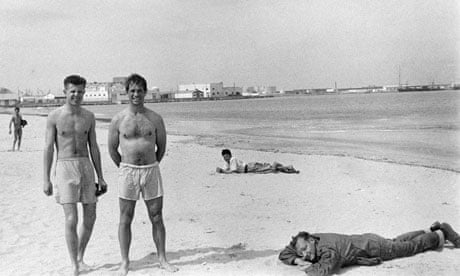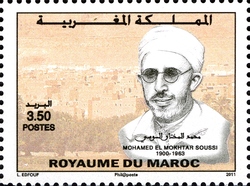Much of Morocco’s art is a blend of indigenous
Berber traditions with Spanish, French, Andalusian, Arab, and Jewish. Their
craftwork includes jewelry (gold, silver, beadwork), textiles, leatherwork, and other mediums that blend
art with functionality
Architecture here can vary across many styles based
on when it was built and whose style it was based on. Because of its location
and historical heritage, buildings can range in a number of styles and
ornamentation. The first major foreign influence was Islam. They introduced
tiling, geometric patterns, fountains, elaborately decorated doorways, and of
course mosques. The Spanish also introduced arches (although I thought that
arches were part of Islamic architecture as well, but maybe these are archier
or something), tile roofs, and gardens. When the French moved into Morocco,
they further changed the cityscape. They required buildings to be no more than
four stories tall, regulated that balconies can’t overlook into someone else’s
home (that seems fair), and required that at least 20% of the residential
property be devoted to garden or courtyard. Although colors and materials may
vary, woodwork and ceramic work seems to span all styles.
From the outsides of the home to the insides, color
and geometric design dominates Moroccan art. Intricate wood carving techniques
are passed down from generation to generation. With these skills, people carve
furniture, tools, and utensils. Ceramics, such as ornamentation and bowls, are
often created and painted in a number of colors and designs. They’re also known
for their brightly colored woven carpets, utilizing many colors and geometric
designs.
The art scene in Morocco today is among some of the
leading displays of African art. Art galleries dot the country, and all of the
major cities hold their own art festivals throughout the year, sometimes
multiple times a year. Moroccan artists have not only excelled in art shows and
exhibitions in Morocco but many artists have showcased their work across
Africa, Europe, and the Americas.
The literature of Morocco is written in many
languages, from Berber and Moroccan Arabic to colonial languages such as French
and Spanish. And really from about 1000-1900, poetry is one of the main styles
of literature. Much of the early poetry was centered around court life and
historical writing. As mosques began popping up across the country, they also
served as a sort of de facto library, housing numerous manuscripts and book stops
for the people in the community.
One of the most important developments in
literature is tied to the city of Fez. During the 12th century, the
world’s first university was the University of Fez, and it had a great impact
in not only writing and developing a literary society but also teaching younger
generations how to continue their efforts.
Starting from about the 16th–19thcenturies, a number of other genres were also introduced during this time.
Travelogues like the rihla (an Islamic journey) written by the Ahmed ibn Nasir
were pretty common along with other religious writings. Biographies, historical
writings, songs, and other styles were also written during this time.
The 20th century brought forth many
changes, not only in their literature but also in a socio-political sense as
well. Mohammed Ben Brahim was part of the first generation of writers who was
prolific during the decades they were part of the French Protectorate. A second
generation of writers such as Mohammed al-Mokhtar Soussi, Abdelkrim Ghallab,
and Allal al-Fassi helped push the transition between occupation and becoming
independent. After Morocco gained its independence, a third generation of
writers emerged and further impacted their literary scene. Writing in a number
of mediums—novels, plays, poetry, journalistic works—modern writers during the
1960s and 1970s pushed the boundaries of what was literature and certainly
pushed the boundaries of what was acceptable.
 |
| Peter Orlovsky, left, Jack Kerouac, and William S. Burroughs (fully clothed) |
The 1950s and 1960s were also a time when many
American and European writers were flocking to Morocco as an escape and
“sabbatical.” Perhaps it was the sun, the Mediterranean climate, or the food,
but quite a few writers spent time in Morocco working on their writing: Jack
Kerouac, William S Burroughs, Tennessee Williams, Brion Gysin, and Paul Bowles
just to name a few.
Up next: music and dance







No comments:
Post a Comment